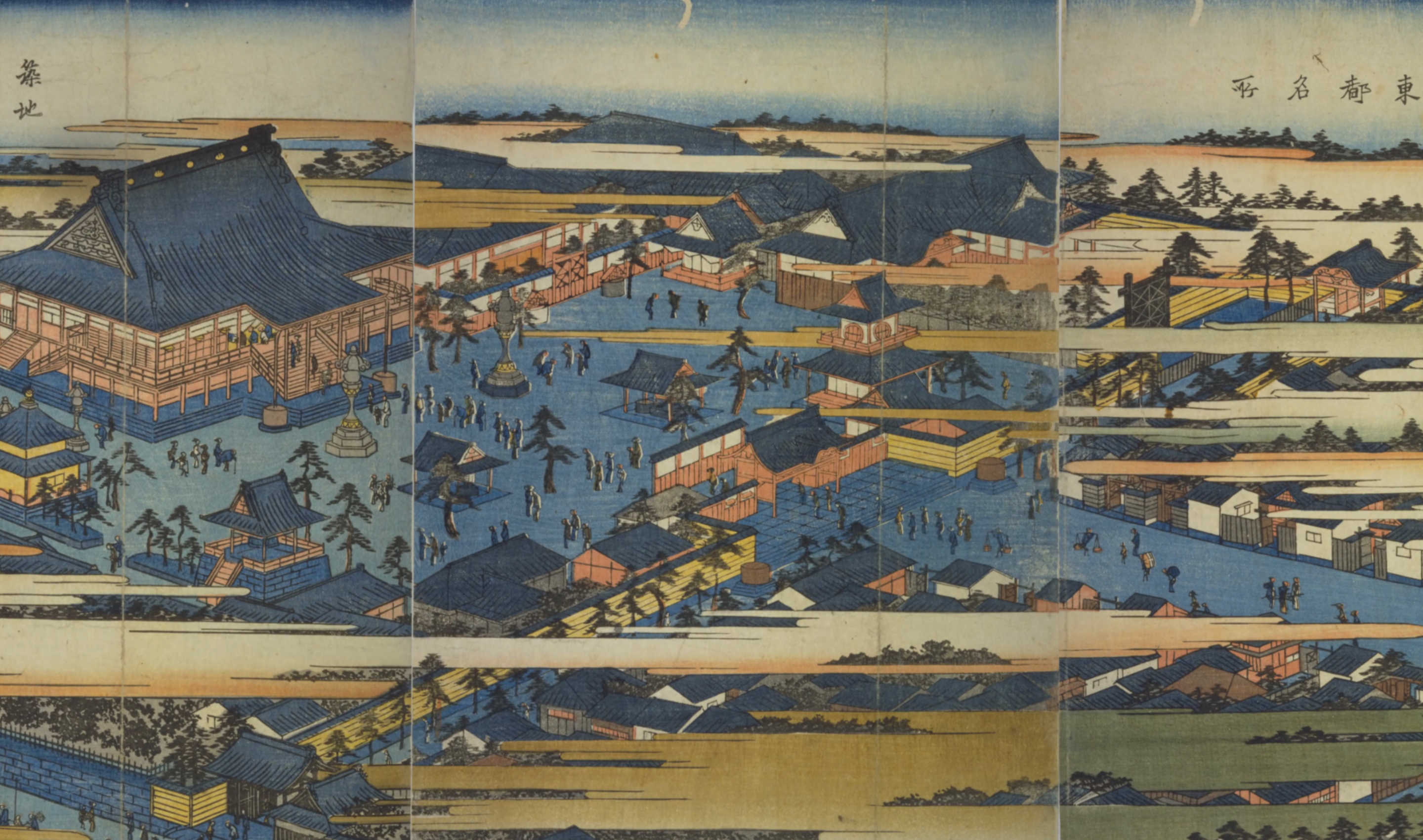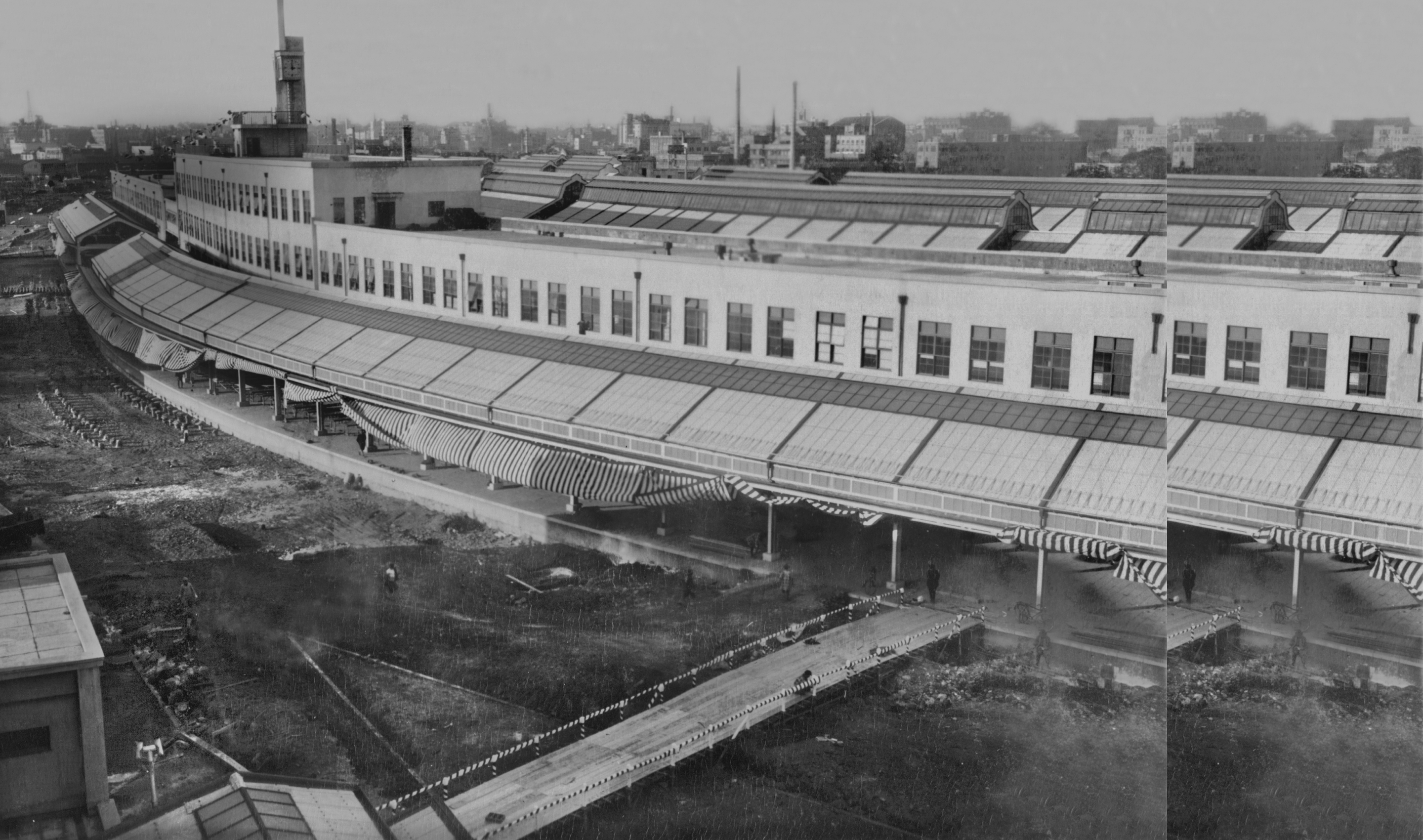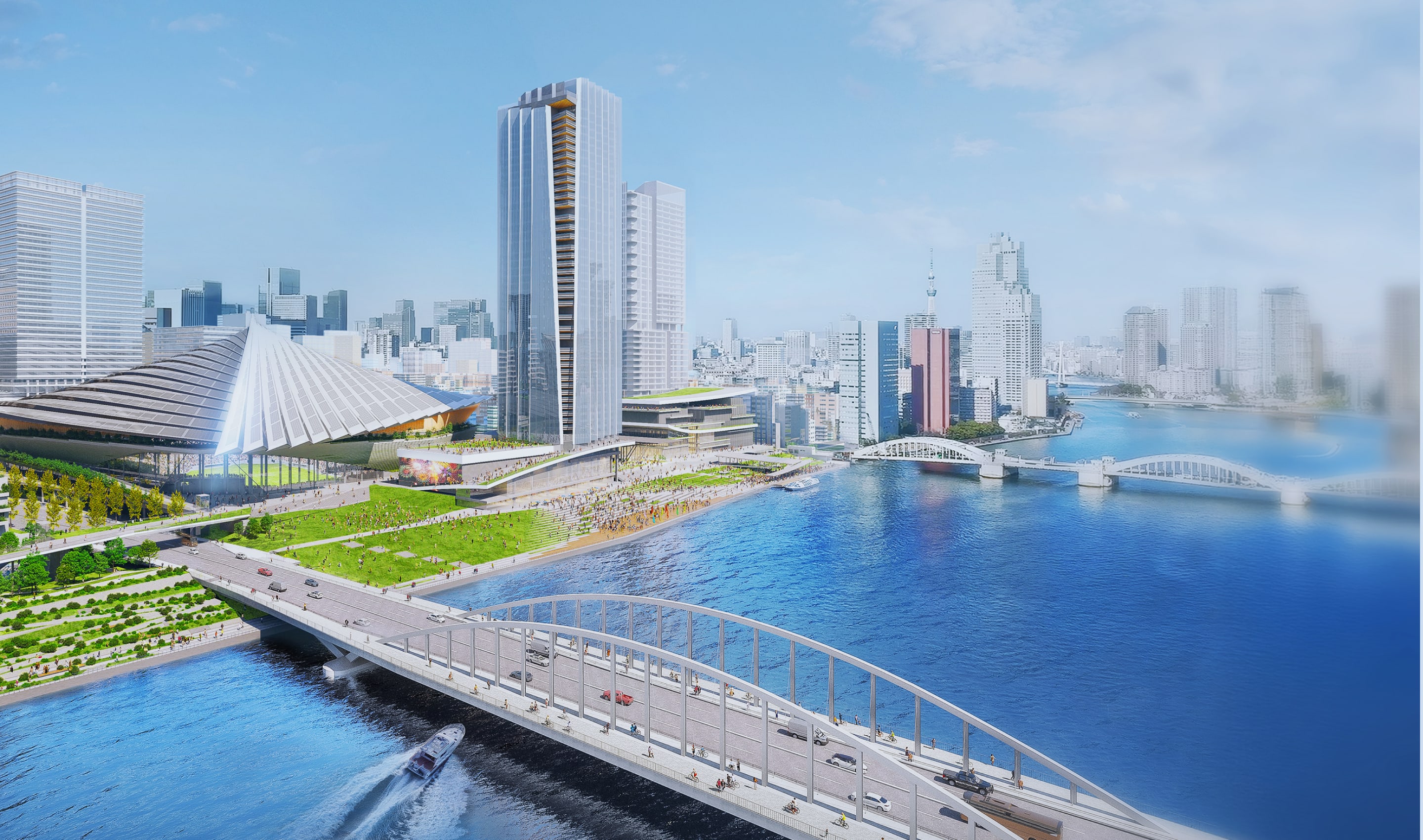The Beginning of Tsukiji
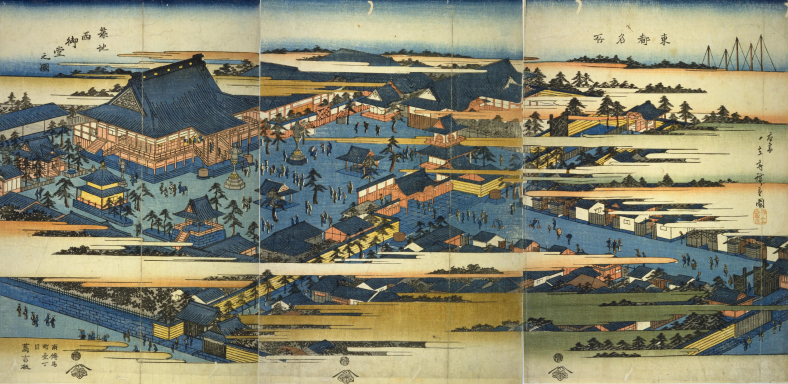
Born from the Ashes of the Great Fire of Meireki
The origins of Tsukiji trace back to the Edo period.
After the Great Fire of Meireki in 1657, land was reclaimed from the sea as part of the city’s reconstruction plan, leading to the creation of Tsukiji.
The Nishi Hongwanji branch temple (now the Tsukiji Hongwanji Temple), which had been destroyed in the fire, was also rebuilt in the newly formed area.
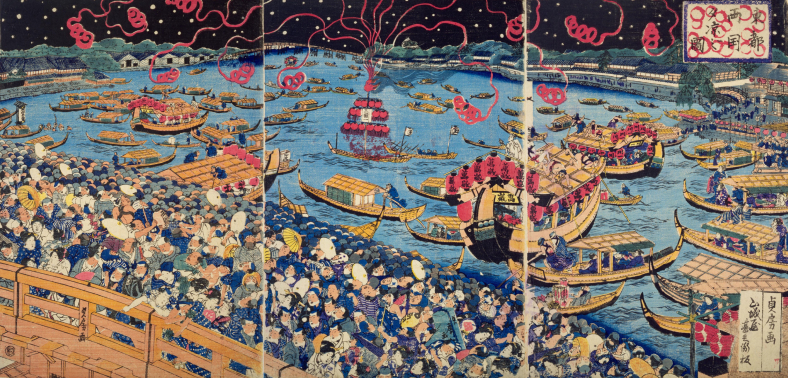
The Sumida River—A Vital Artery of Edo-Era Water Transport
During the Edo period, water transport was widely used, and Tsukiji served as a key logistics hub for transport on the Sumida River, which played a particularly important role.
The Sumida River also bustled with activity from boat cruises and fireworks, and was cherished by the people of Edo.
point
A New Gateway to Water City Tokyo
The open spaces and waterfront areas, designed for people of all ages to gather and enjoy a variety of activities, will establish this site as a new gateway to Water City Tokyo.
In addition, with access to land, sea, and air transportation, including cars, subways, heliports, and water transport, the area will be reborn as a key transportation hub.
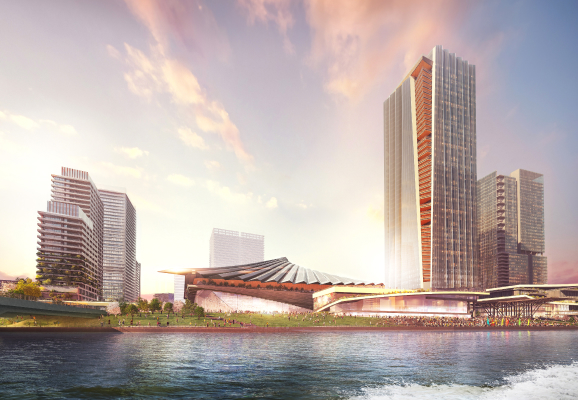
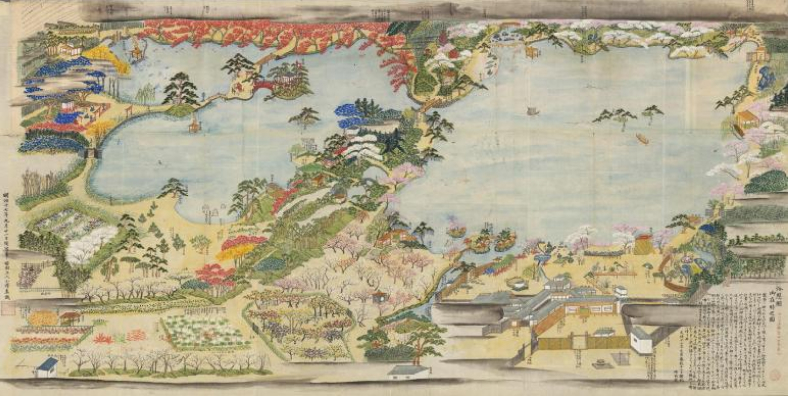
Yokuon-en — A Garden of Edo
In 1792, Matsudaira Sadanobu — known for leading the Kansei Reforms — created the Yokuon-en garden at his secondary residence in Tsukiji.
The garden made use of Tsukiji’s unique waterfront location, drawing in seawater from Edo Bay so that the scenery would shift with the ebb and flow of the tides.
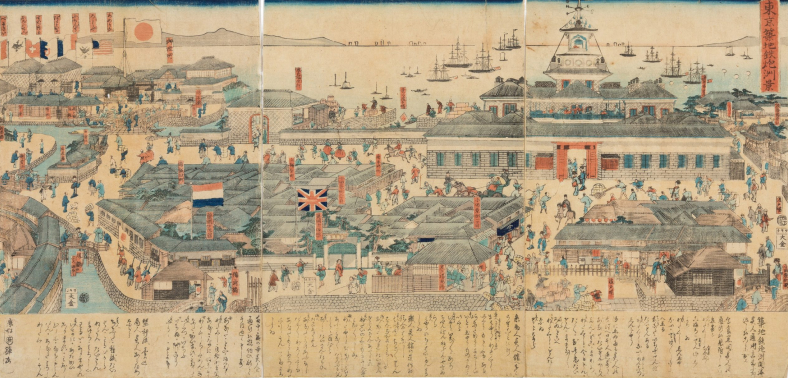
Tsukiji as a Hub of Cross-Cultural Exchange
In the Meiji era, a foreign settlement was established in Tsukiji to facilitate trade.
Home to embassies, consulates, and many cultural figures, the settlement played a key role as a gateway for cross-cultural exchange in the early Meiji period.
point
A New Hub for Cultural Exchange: Grand-scale Multifunctional Venue and MICE Facilities
Once a gateway for cultural interaction as a foreign settlement, Tsukiji is now being reborn as a new center for global exchange.
With an indoor, all-weather multi-purpose stadium accommodating approximately 50,000 people, MICE facilities capable of meeting diverse needs, including hosting international conferences, and accommodations suitable for welcoming state guests and VIPs, the area will foster interaction with people from around the world.
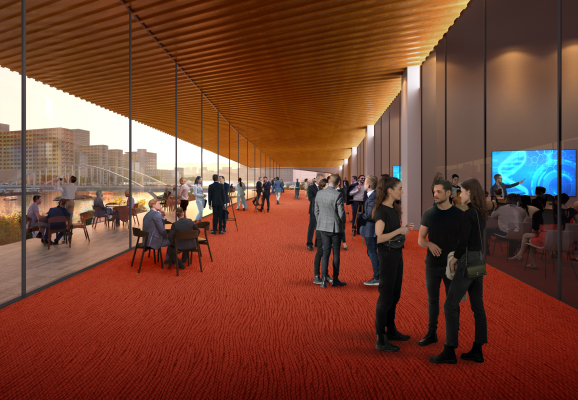
Emergence of the Tsukiji Market
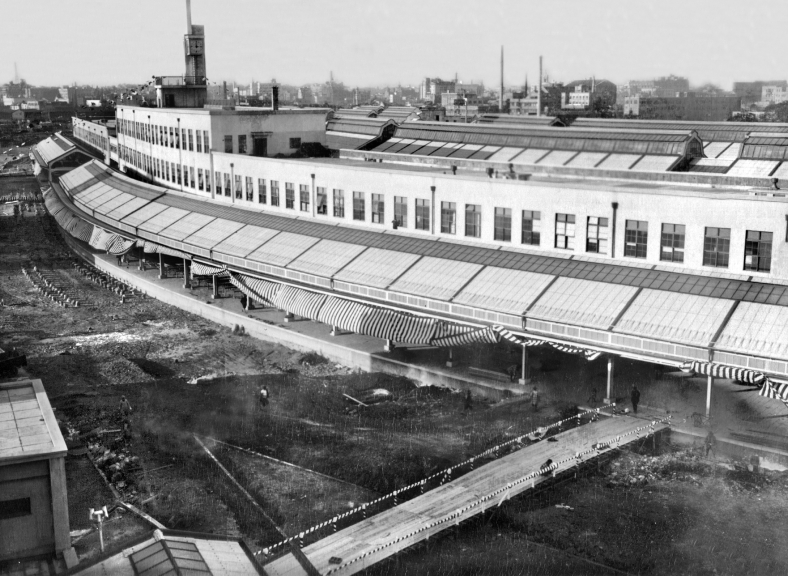
Born out of the Great Kanto Earthquake
The Great Kanto Earthquake of 1923 destroyed the fish market in Nihonbashi.
A temporary market was established in Tsukiji—an area well suited for both land and water transport—as a replacement.
In 1935, this market officially opened as the Tokyo City Central Wholesale Market - Main Market, marking the beginning of the Tsukiji Market.

From Postwar Revival to One of the World’s Largest Fish Markets
Though the Tsukiji Market was under government control during the war, it gradually regained its energy after Japan’s surrender.
As the country moved from postwar recovery into a period of rapid economic growth, Tsukiji Market also expanded—ultimately becoming one of the largest fish markets in the world and a cornerstone of Japan’s food culture.
And to the Future

Relocation to Toyosu
As the Tsukiji Market facilities aged, the Tokyo Metropolitan Government decided in 2001 to relocate the market. In 2018, the new Toyosu Market officially opened.
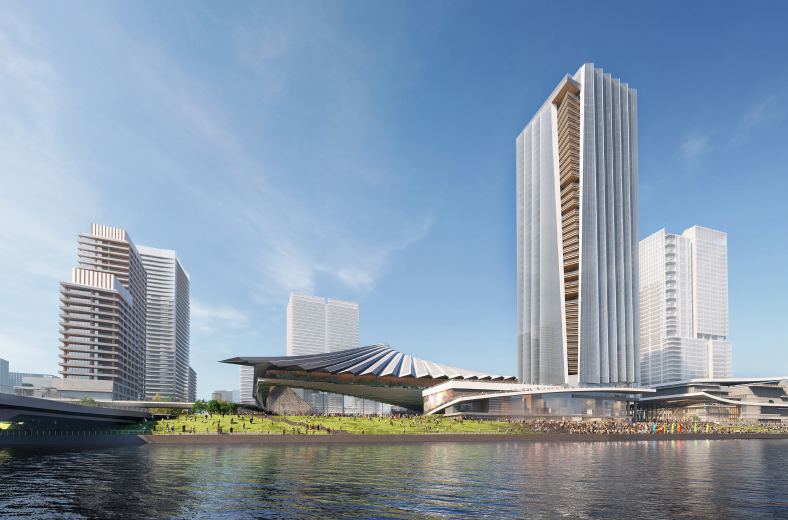
Toward a New Tsukiji
Now, a new chapter in the redevelopment of Tsukiji begins.
While carrying forward its rich history and cultural legacy, the project will foster new cultural creation and exchange—shaping a neighborhood that will become a source of pride for Tokyo, Japan, and the local community.
